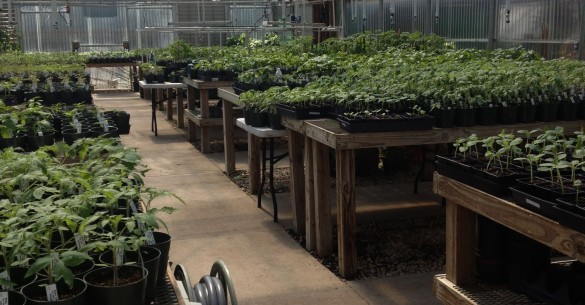When looking for new plants look carefully by Dr. Mario A. Villarino, County Extension Agent for Agriculture and Natural Resources

[adning id=”33097″]

Proper selection is the single most important factor in determining how long a plant will survive following purchase. The selection process not only involves the needs but also quality and a knowledge of the specific cultural requirements of the plants. Your needs play an important role in the selection process.
[adning id=”33207″]
Plants are purchased for a variety of reasons (gifts, holidays, decorative accents, etc.) and each defines the consumers expectations of the product. Helping to identify these needs will make selection of the appropriate plant much easier. Selecting a high quality product is important. You should look for plants that are sturdy, clean, shapely, well-potted, and that have dense, healthy foliage. Avoid plants which have yellow or chlorotic leaves, burned leaf margins, water soaked or wilted foliage, spots or blotches and rank, spindly growth. Also avoid plants that have been mechanically damaged in some way, have obviously dropped lower leaves or appear wilted. Flowering plants with only one half to three fourths of their flowers fully open will extend the blooming cycle for maximum enjoyment. Plants should be free of insects and diseases. Check the undersides of leaves and leaf axils for the presence of insect pests. Also, avoid plants with gray, moldy or water soaked flowers. Many plants grown in full sun have leaves (sun leaves) which are structurally different from those grown in the shade (shade leaves). Since sun leaves receive more light, they are typically less efficient at photosynthesis than shade leaves. Therefore, when plants with sun leaves are placed in low light areas, they frequently drop their foliage and make a new set of shade leaves which are photosynthetically more efficient. To reduce the shock which occurs when a plant with sun leaves is placed in the shade, gradually reduce the light levels it is exposed to. This process is known as acclimatization. Consumers should acclimatize plants when placing them outside during summer by gradually increasing light intensities. The process is reversed before plants are brought indoors in fall. Newly purchased plants can be acclimatized by initially locating them in a high-light area of the home (southern exposure) and gradually moving them to their permanent low light location over 3-4 weeks.
Coming UP
The Hopkins County Master Gardeners would like to invite you to participate at the 2021 Plant Swap this coming Saturday May 1, 2021 starting at 9:00 AM at the parking lot of the Bright Star Veterinary Clinic located at 744 Gilmer Street in Sulphur Springs. All types of plant varieties will be offered for swapping or donation. This is a great opportunity to get a good plant and spent little money. Since the plants in the swap are usually excess plants, the plants offered are a good option to grow in Hopkins County. For more information please contact the Hopkins County Extension Office at 903-885-3443 or email me at m-villarino@tamu.edu.
[adning id=”33207″]











